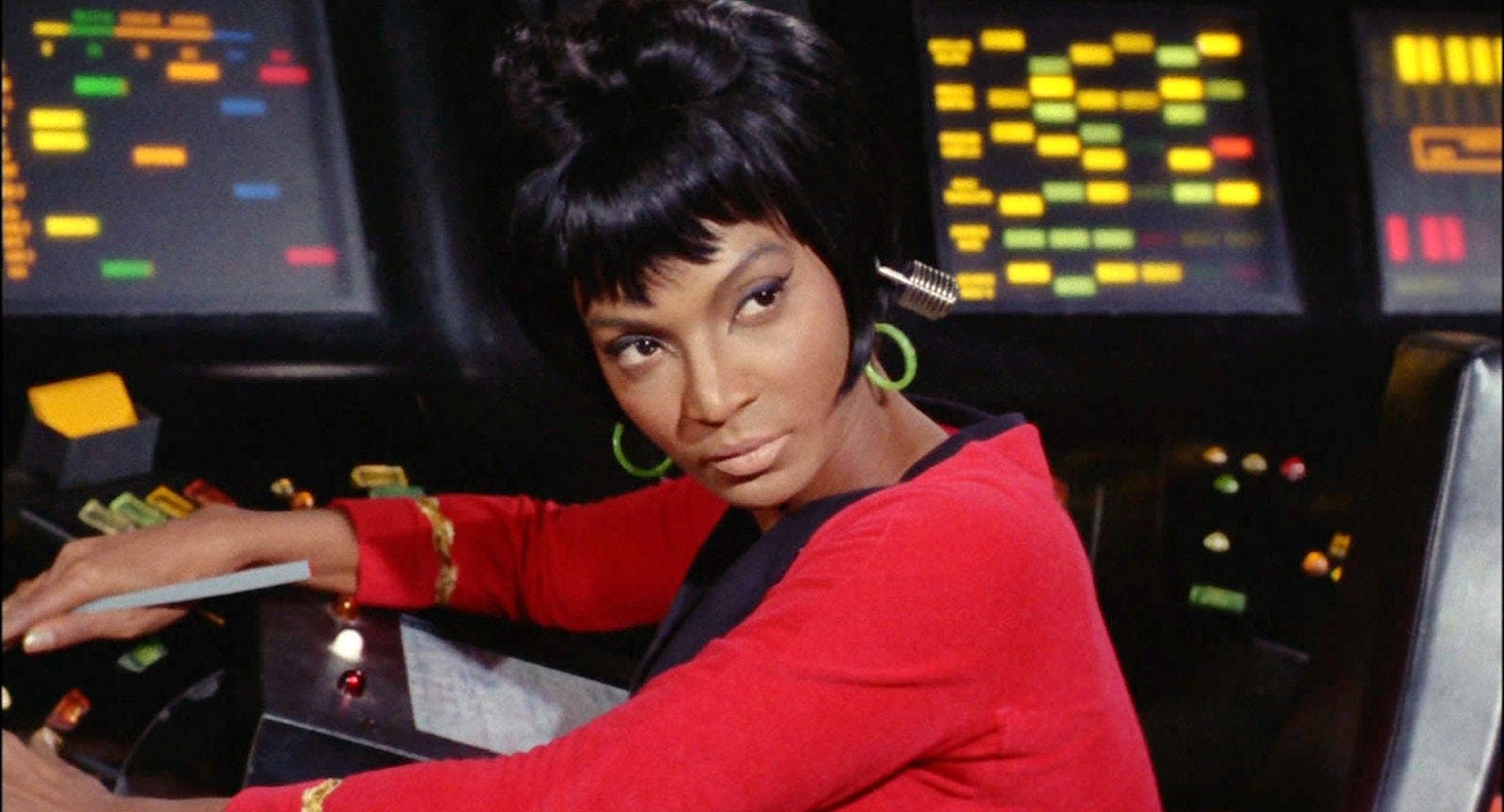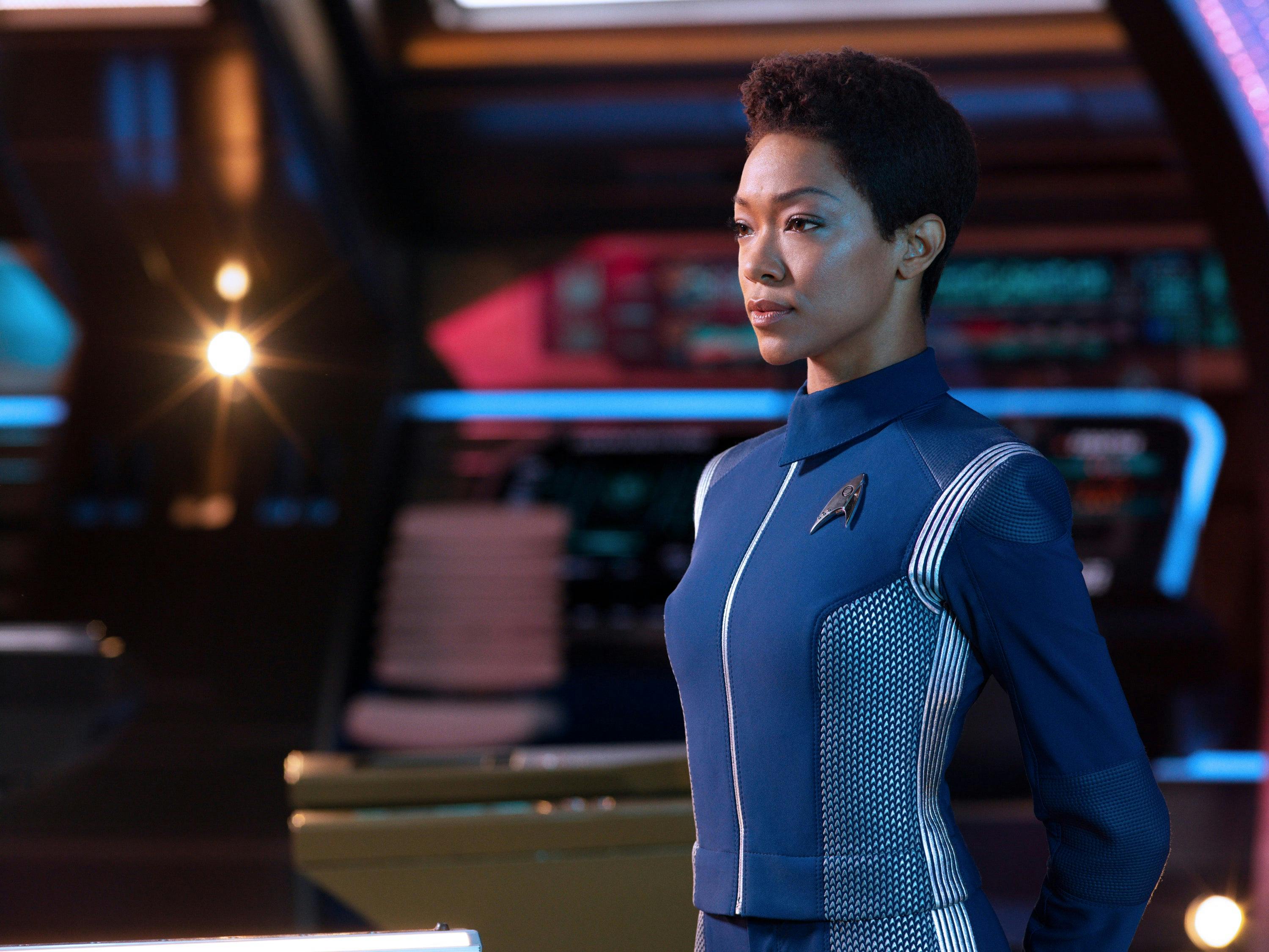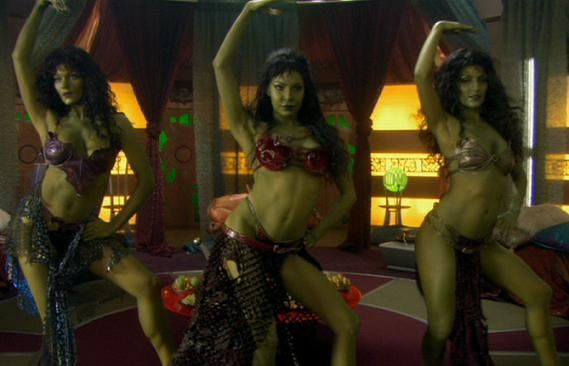Published Aug 3, 2019
Dispatches from #STLV: Holodeck-Inspired VR Transforms Conversation About Diversity
How one professor is using 'Star Trek' as a blueprint for teaching race, class and gender in media.

StarTrek.com
Professor Jennifer Bailey Woodard was one of the first in her small to town to attend a newly desegregated school. She was one of very few Black students in her new classroom, and thus she sought community elsewhere. “Star Trek gave me a place where I could fit,” Woodard recalls.
Like her childhood hero Lieutenant Uhura, Dr. Woodard has found her career in communications. At Star Trek Las Vegas, Dr. Woodard and her Middle Tennessee State University colleague professor Stephanie Dean presented “Star Trek: Gendering the Holodeck and Diversifying the Classroom” — a one-hour introduction to the way Trek can be used to teach gender, communications, and broaden the tools that educators use to help students be good citizens in a diverse world.
As a professor of communications at Middle Tennessee State University, Dr. Woodard uses Star Trek as a blueprint for teaching race, class and gender in media. The concept of ‘Infinite Diversity in Infinite Combinations’ (commonly known throughout fandom as IDIC) at the core of Trek illustrates for students how variety, rather than sameness, is key to what actually unifies humanity. Trek emphasizes our shared humanity without erasing our individual or communal cultural heritages.

StarTrek.com
Pride in one’s cultural heritage and community background — whether it is Scotty's pride in his Scottish heritage or Chekov's pride in his Russian background — contribute to and better the crew of the Enterprise. IDIC, as shown through Starfleet, also tells viewers that anyone can be a Starfleet officer, and even captain of a starship. From a Black captain in Captain Sisko, a woman captain in Captain Janeway, to a Black woman lead in Commander Burnham, Star Trek has continued in the tradition of putting in positions of leadership and prominence faces and identities that disrupt dominant ideologies of white men as the only people capable of brave, bold leadership.
Yet, even given the values at the core of the Federation, Dr. Woodard noted that everything, including the Star Trek we see on screen, is socially constructed. All media, including television and film, can either help reinforce dominant ideologies, or disrupt them. Throughout The Original Series and into The Next Generation, women, both human and alien, have often appeared as sex objects, from the scantily-clad Orions to the scantily-clad women robots of Mudd. These kinds of messages in the media can teach young people the wrong lessons about marginalized groups, like women.
It is here that Professor Dean’s work on virtual reality as an empathy-development technology steps in. In the session, Dr. Dean told a story about a male student who, for the first time, experiences an incident of workplace sexism – by playing a woman in a virtual reality environment. He emerged from the simulation feeling angry and more aware of the way sexist microaggressions can make women feel. But should a student need to experience something themselves in order to accept that the experience occurs?

StarTrek.com
When asked about this Dr. Dean and Dr. Woodard explained that these virtual reality scenarios are grounded by students’ prior reading and coursework. Going into the virtual reality, they already know the theory about how sexism and racism can work in society. The VR scenarios they’re presented with are used to help make their intellectual knowledge about these problems “stick” by making it part of the students' lived experience.
Professors Woodard and Dean emphasized that virtual reality isn’t very different from the Holodecks that became a staple of the Star Trek universe starting with TNG. In both cases, users are transported to a new environment and can gain insight into a life lived under different conditions. Woodard connected this technology with Star Trek’s ideology of IDIC and the contemporary Black feminist theory of ‘intersectionality.' Coined by Kimberlé Crenshaw in 1989, intersectionality is the phenomenon where experiences with discrimination can overlap. For example, sexism and racism can combine to create a multilayered discriminatory experience.
Dr. Woodard noted that IDIC represents an explicit challenge to the dangers that intersectionality represents because it celebrates and honors the different combinations that we come in. She reminded us that many of us cheered about Sonequa Martin-Green’s leading role in Discovery, but that in a universe where IDIC is the dominant ideology, the fact that she’s a Black woman wouldn’t be meaningless, but it wouldn’t be momentous either. In the Star Trek universe, Michael Burnham is normal, not barrier-breaking. With this, Dr. Woodard and Dean showed Trek fans that we can help bend the arc of history toward that universe, one virtual reality scenario at a time.
Dr. Chanda Prescod-Weinstein is an Assistant Professor of Physics and Astronomy and Core Faculty in Women’s Studies at the University of New Hampshire. Her research focuses on cosmology and particle physics. Find her on twitter @IBJIYONGI.

